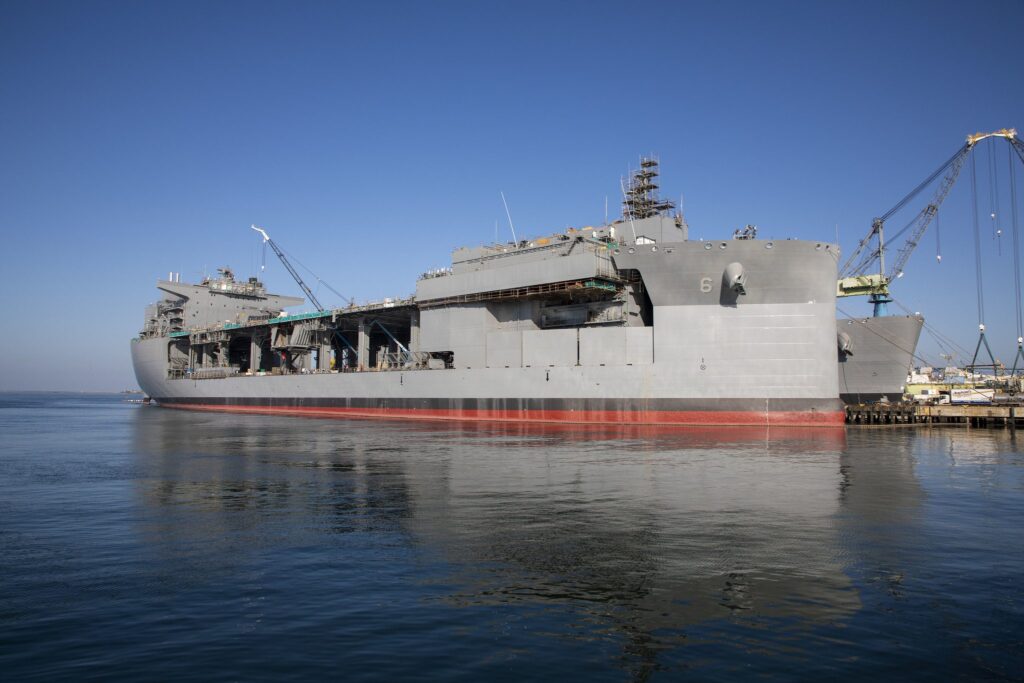
Photo courtesy General Dynamics NASSCO
U.S. Navy Christens New Expeditionary Sea Base USNS John L. Canley
The U.S. Navy on Saturday christened the USNS John L. Canley (ESB 6), the fourth ship for the U.S. Navy’s reclassified Expeditionary Sea Base (ESB) program, at the General Dynamics NASSCO shipyard in San Diego, California.
The ship is named for Medal of Honor recipient, retired Sgt. Maj. John L. Canley, who served in the Marine Corps for 28 years. In 2018, Canley was awarded the nation’s highest honor 50 years after he rescued 20 fellow Marines under enemy fire in Vietnam during the Battle of Hu? City in 1968. He passed away on May 11, 2022.
ESBs are an afloat forward staging base-variant of the mobile landing platform, described as highly flexible platforms used across a broad range of military operations, acting as a mobile sea base to provide critical access infrastructure in support of deployment of forces and supplies. The 784-foot ship has a 52,000 square-foot flight deck to support MH-53, MH-60, MV-22 tilt-rotor, and H1 aircraft operations.
In a time-honored Navy tradition, the ship’s sponsor, Ms. Patricia Sargent, daughter of Sgt. Maj. Canley, christened the ship by breaking a bottle of sparkling wine across the bow.
“Today, we celebrate and honor a true hero, Sgt. Maj. Canley. This ship represents his courage, selflessness, and strength,” said Dave Carver, president of General Dynamics NASSCO. “On behalf of the 35-hundred men and women of General Dynamics NASSCO, I am proud to present the USNS John L. Canley for christening.”
The USNS Robert E. Simanek (ESB 7), the fifth ship in the ESB program, is currently under construction. The first three ships in the ESB program – USS Lewis B. Puller (ESB 3), USS Hershel “Woody” Williams (ESB 4), and USS Miguel Keith (ESB 5) – have been delivered to the U.S. Navy.
ESBs are operated by Military Sealift Command with a civilian and military crew.





Comments are closed.